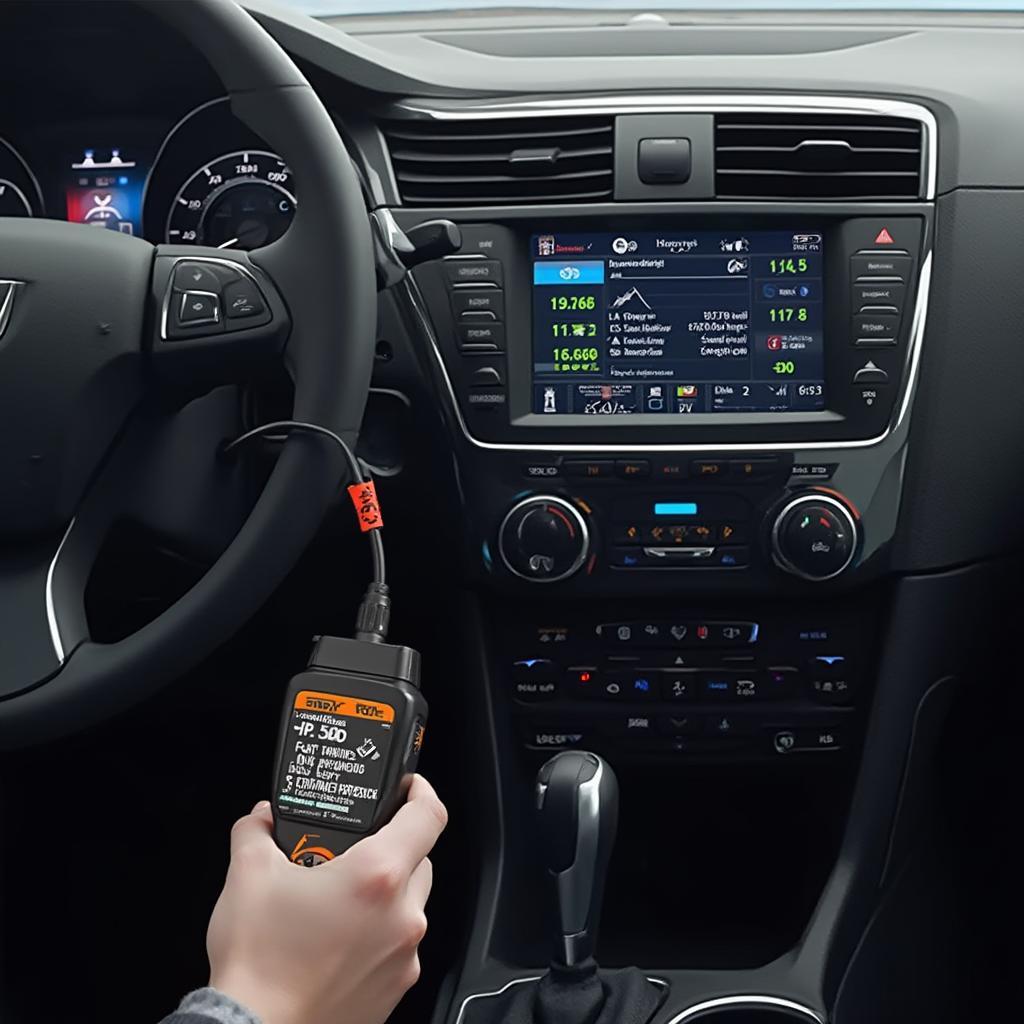Understanding the relationship between your car’s idle, OBD2 readings, and passing the California smog check is crucial. A smooth idle is often indicative of a healthy engine, but it’s not the only factor considered during a smog test. This article will delve into the intricacies of idle car OBD2 smog checks in California, providing valuable insights to help you prepare your vehicle and avoid costly repairs.
How Does Idle Affect OBD2 Smog Check Results in California?
Your car’s idle speed plays a significant role in how your engine burns fuel and manages emissions. A rough or unstable idle can cause incomplete combustion, leading to increased hydrocarbon (HC) and carbon monoxide (CO) emissions, which are strictly regulated in California. The OBD2 system constantly monitors these parameters, and any deviations from the acceptable range will be flagged as potential issues during the smog check.
While a smooth idle generally suggests a healthier engine, it’s not a guarantee of passing the smog check. The OBD2 system goes beyond simply measuring idle speed. It checks various sensors and systems that contribute to efficient combustion and emission control. These include the oxygen sensor, catalytic converter, evaporative emission system, and more.
Deciphering OBD2 Codes Related to Idle and Smog
Understanding OBD2 codes is key to addressing idle-related smog issues. For instance, a P0505 code indicates a problem with the Idle Air Control (IAC) valve, a component crucial for maintaining a steady idle. Similarly, codes related to misfires, oxygen sensors, or the EGR system can indirectly impact idle stability and smog check results. Learning to interpret these codes can help you pinpoint the root cause of the problem and take appropriate action.
Common Idle Problems Affecting California Smog Checks
Several common idle problems can trigger OBD2 codes and lead to smog check failures in California. A faulty IAC valve can cause erratic idling, while vacuum leaks can disrupt the air-fuel mixture, leading to increased emissions. Issues with the throttle position sensor, mass airflow sensor, or fuel injectors can also impact idle stability and contribute to smog check failure. Identifying and addressing these problems is crucial for passing the test.
Preparing Your Car for an Idle OBD2 Smog Check
Proper maintenance is essential for ensuring a smooth idle and a successful smog check. Regular tune-ups, including spark plug replacements, air filter cleaning, and fuel system cleaning, can significantly improve engine performance and reduce emissions. Addressing any known or suspected issues related to idle control, such as a faulty IAC valve or vacuum leaks, before the smog check can save you time and money.
What if My Car Fails the Idle OBD2 Smog Check?
Failing the smog check doesn’t mean the end of the road. A qualified mechanic can diagnose the specific OBD2 codes and recommend the necessary repairs. In some cases, a simple adjustment or sensor replacement may be sufficient. For more complex issues, such as a faulty catalytic converter, more extensive repairs might be required. Don’t hesitate to seek professional help if your car fails the smog check.
Expert Insights on Idle and Smog Checks
“A consistent idle is a good indicator of engine health, but it’s just one piece of the puzzle,” says Robert Hernandez, ASE Certified Master Technician. “The OBD2 system provides a comprehensive picture of your engine’s performance, and addressing any flagged issues is crucial for passing the smog check.”
“Regular maintenance is the best preventative measure,” adds Maria Sanchez, emissions specialist. “Simple steps like regular tune-ups and addressing minor issues can significantly improve your chances of passing the smog check on the first try.”
Conclusion
Passing the idle OBD2 smog check in California requires a well-maintained engine and a properly functioning emission control system. By understanding the relationship between your car’s idle, OBD2 readings, and California’s strict emission standards, you can take the necessary steps to prepare your vehicle and avoid potential issues. Remember, a smooth idle is a good starting point, but addressing any underlying OBD2 codes is crucial for a successful smog check.
FAQ
- What is an OBD2 smog check? An OBD2 smog check uses a diagnostic tool to scan your car’s onboard computer for stored trouble codes and monitor real-time data related to emissions.
- How does idle speed affect the smog check? An unstable idle can lead to increased emissions, which can cause the smog check to fail.
- What are some common OBD2 codes related to idle problems? P0505 (Idle Air Control System), P0300 (Random/Multiple Cylinder Misfire) are examples.
- How can I prepare my car for an OBD2 smog check? Regular maintenance, including tune-ups and addressing known issues, is crucial.
- What should I do if my car fails the smog check? Consult a qualified mechanic to diagnose and repair the identified issues.
- How often do I need a smog check in California? This depends on the vehicle’s age and type. Check the California DMV website for specific requirements.
- Can I perform an OBD2 scan myself? Yes, you can purchase an OBD2 scanner and read the codes yourself, but diagnosing the underlying issue often requires professional expertise.
Need more help? Check out our other articles on OBD2 scanners and smog checks!
Need expert advice? Contact us via WhatsApp: +1(641)206-8880, Email: [email protected] or visit us at 789 Elm Street, San Francisco, CA 94102, USA. Our 24/7 customer support team is ready to assist you.


